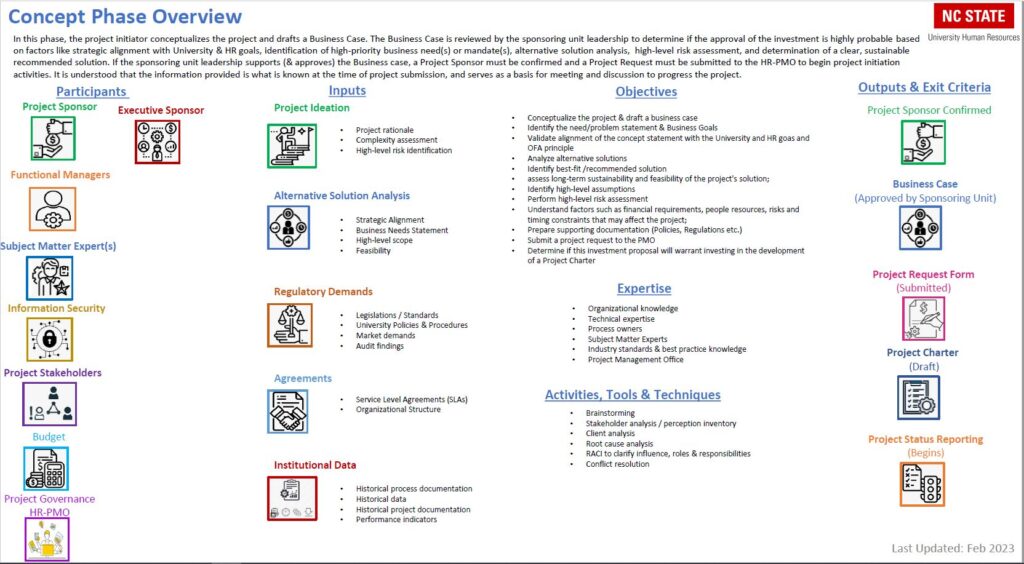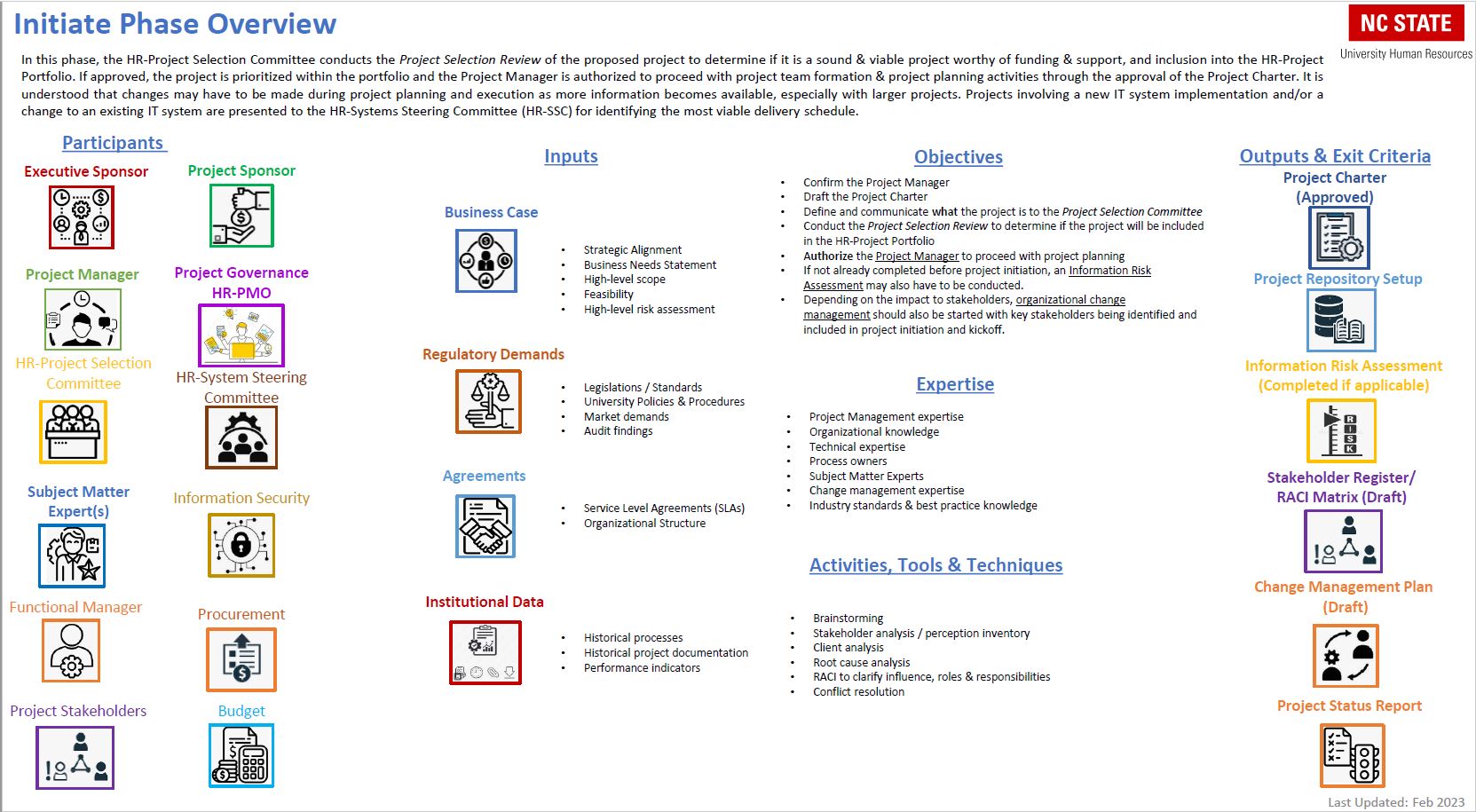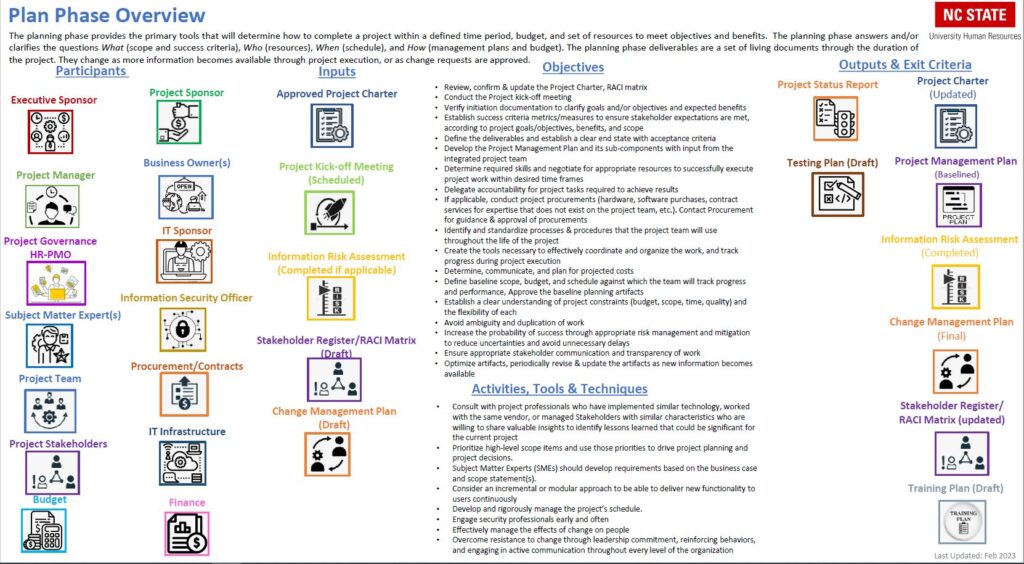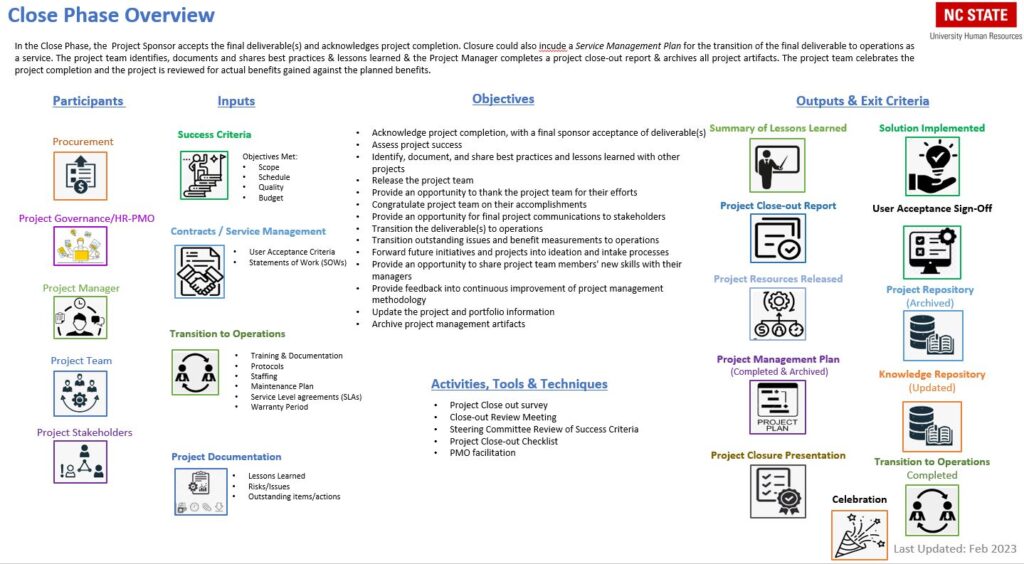Project Management Lifecycle (PMLC)
Project Management Lifecycle (PMLC)
The Project Management Life Cycle (PMLC) refers to a series of activities that are necessary to fulfil project goals and objectives. Projects vary in size, complexity, and type, but all projects can be mapped to the PMLC structure no matter how large or small, regardless of the project teams experience.
The purpose of following a PMLC is to create a repeatable process for managing projects that delivers significant value to the business and supports the organization’s strategic goals and objectives. The PMLC improves the quality, value, and likelihood of success for projects and ensures that projects are undertaken with clear business objectives, accurate costs, and realistic schedules.
During the delivery of projects, the Project Management Life Cycle (PMLC) and the System Development Lifecycle (SDLC) are tightly integrated and must be simultaneously managed. The successful management of each lifecycle can greatly affect the other, and both directly determine the level of success of the overall project.
Within the PMLC, there are iterative groups of processes within five project phases that a project team navigates to complete the project.
The Concept Phase
The Concept Phase encourages smart thinking, an open mind, and thoughtful work done prior to formally initiating a project. Long-term project success requires a healthy dose of optimism and a “can do” attitude, combined with the ability to confront challenges that present themselves during the course of a project.
In this phase the project initiator conceptualizes the project and drafts a Business Case. The Business Case is reviewed by the sponsoring unit leadership to determine if the approval of the investment is highly probable based on factors like:
- strategic alignment with University & HR goals
- identification of high priority business need(s) or mandate(s)
- analysis of alternative solutions
- high-level risk assessment that clarifying acceptable risk vs. return
- understanding of financial, legal, scheduling and other resource requirements
- determination of a clear recommended solution and
- long-term feasibility & sustainability of the recommended solution
If the sponsoring unit leadership supports (& approves) the Business Case, a Project Sponsor must be confirmed and a Project Request must be submitted to the HR-PMO to begin project initiation activities.
It is understood that the information provided is what is known at the time of project submission, and serves as a basis for meeting and discussion to progress the project.

The Initiate Phase
The Initiate Phase shows how creating a good foundation leads towards project success. The project staff, business organization, and external stakeholders must understand what is being undertaken, what to expect as the project takes shape, and what are each group’s roles and responsibilities.
Upon receipt of the Project Request, HR-PMO leads the following initiation activities:
- Reviews the submission to confirm that the project proposal is not a duplicate request.
- Schedules and conducts a Project Intake Meeting with the project requestor and/or Project Sponsor to review the Business Case & other supporting documentation submitted to clarify project objectives, and to gather additional information required to prepare the project for the Project Selection Review.
- Assigns a Project Manager based on the size & complexity of the project (if not assigned already).
- Introduces the Project Manager to the Project Submitter and Project Sponsor.
Note: The documents submitted must provide a background that sets the context for the business need, an analysis of possible solutions with high level resource estimates (since product may be unknown at this point), and a recommendation for a path forward.
Based on the supporting documentation provided, the Project Manager works with the HR-PMO to draft the Project Charter for presentation to the HR-Project Selection Committee (HR-PSC) and the Project Selection Review is scheduled.
Note: The Project Selection Committee meets monthly to review and approve projects for addition to the HR project portfolio.
The HR-Project Selection Committee (HR-PSC) reviews the Project Charter (& other supporting documents) to determine if the proposal is a sound & viable project worthy of funding, support, and inclusion into the HR-Project Portfolio.
If approved, the project is prioritized within the HR project portfolio and the Project Manager is authorized to proceed with project team formation and project planning activities through the approval of the Project Charter that establishes project objectives, roles and outcomes.
Note: It is understood that changes may have to be made during project planning and execution as more information becomes available, especially with larger projects.
Additionally, all projects involving a new IT system implementation and/or change to an existing IT system are presented to the HR-Systems Steering Committee (HR-SSC) for resourcing and scheduling.

The Plan Phase
In the Planning Phase the project team will estimate and establish the scope of work, define and refine the project objectives, develop the course of actions to attain those objectives, and establish methods for managing and controlling the project.

The Execute Phase
In the Execute Phase, the project team will be guided to execute tasks and generate deliverables described in the project documentation. The team is guided to pay particular attention to the production and quality of team deliverables, and to ensure that work is completed with the right level of discipline and rigor to reduce project risk and meet quality standards.
The Close Phase
In the Close Phase, the product is accepted and transferred to the support organization, or a decision has been made to suspend or cancel the project. This phase also provides the opportunity to assess the project and develop lessons learned and recommended practices to be applied to future projects. The completion of all Close Phase activities signifies the formal ending of all project work.
In the Close Phase:
- The Project Sponsor accepts the final deliverable(s) and acknowledges project completion;
- A Service Management Plan is developed and implemented for the transition of the final deliverable to operations as a service;
- The project team identifies, documents and shares best practices & lessons learned;
- The Project Manager documents the Project Close-out Report, conducts the Close-out Meeting and archives all project artifacts;
- The project team celebrates the project completion; and
- The project is reviewed for actual benefits gained against the planned benefits.

Monitor & Control
Monitoring and Controlling is referenced as a collection of processes that occurs throughout the project to ensure that project tasks are continuously reviewed to maintain quality.
The Monitoring and Controlling processes include all the tasks and metrics necessary to ensure that the approved project proceeds with minimal risk and is within scope, on time, and on budget. These processes involve comparing actual performance with planned performance and taking corrective action to yield the desired outcome when significant differences exist.
The Monitoring and Controlling processes are continuously performed throughout the life of the project and are incorporated into the five PMLC process phases.